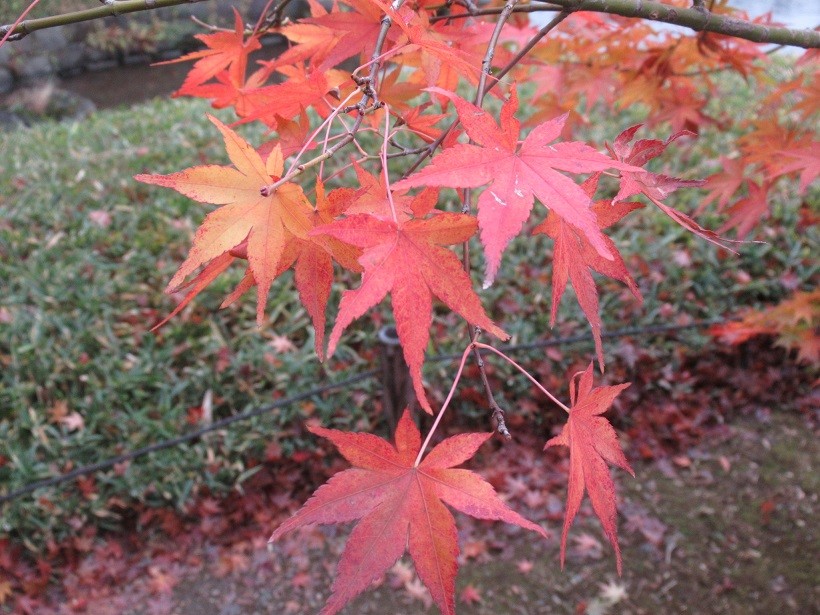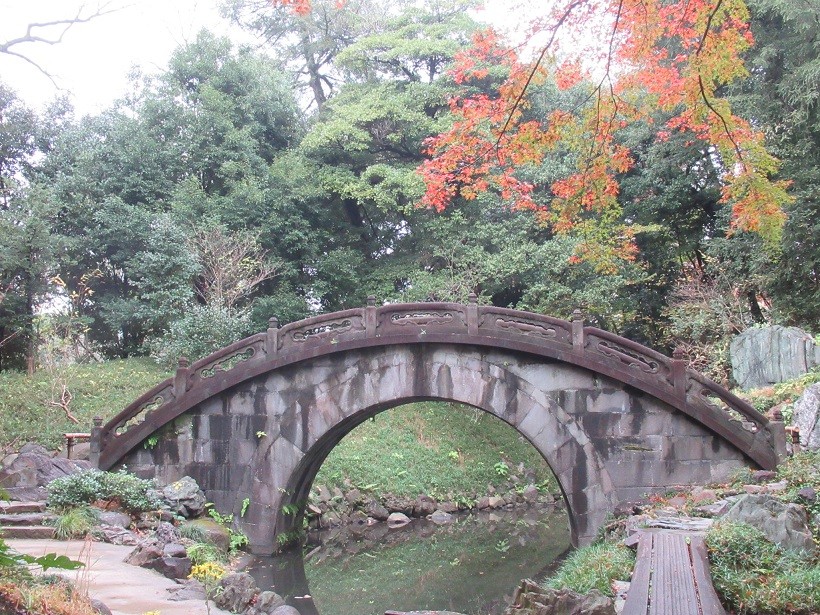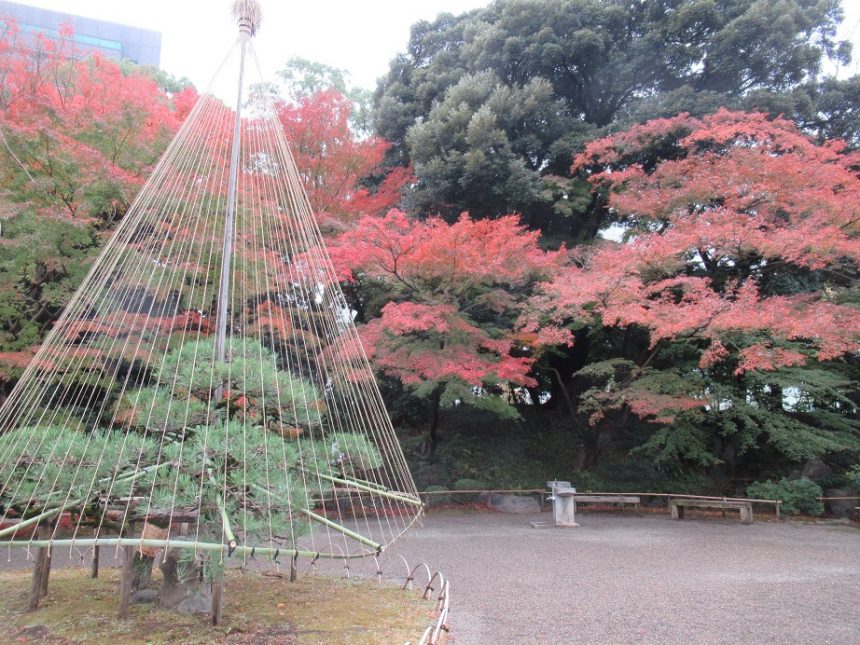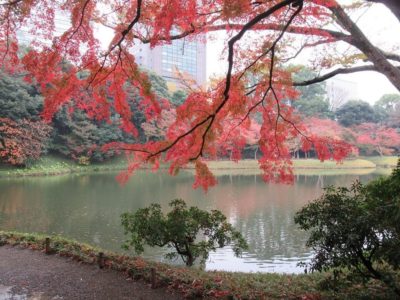While the cherry blossoms of spring are a famous attraction in Japan in March and April, this is not the only season with beautiful natural attractions. Fall brings wonderful foliage colors all over Japan between September (Hokkaido) and early December (Tokyo and Kyoto). The most common colors are the red of the maple trees and the bright yellow of the ginkgo trees. Some of the best spots to enjoy the fall foliage are in Japanese landscape gardens and in parks. Koishikawa Korakuen in Tokyo is one of the best places for autumn leaves in the city. So let us introduce this historical garden and its features!

Koishikawa Korakuen History
Koishikawa Korakuen Garden was originally built in 1692 by the founder of the Mito branch of the Tokugawa family, Yorifusa, as the garden of his secondary residence which became their main residence later. He was the eleventh son of the first Tokugawa Shogun, Ieyasu, and one of the three most important relative families of the shogun. The garden was completed during the reign of the second lord, Mitsukuni. The garden was designed in a circuit style, with ponds and artificial hills centering on the ponds.
When developing the garden, Mitsukuni picked Zhu Zhiyu, serving retainer of the Ming Dynasty as an advisor. The name Korakuen was chosen by Zhu from the Chinese text ‘Gakuyoro-ki’ by Fan-Zhongyan, meaning “Worry before all worries of the people, and enjoy after all enjoyments of the people”.
In 1869, the residence and the garden were taken by the new Meiji government returning the land and the people of the feudal lords to the Emperor. The site of the residence was used for a munition factory, but fortunately, the garden was restored. In 1923, the garden was designated as a historic site and a place of scenic beauty by the national government. To distinguish the garden from the garden with the same name in Okayama, the government added the name Koishikawa for the garden in Tokyo. It was opened to the public in 1938. Currently, the garden is managed by the Tokyo Metropolitan Government.
Koishikawa Korakuen Highlights

The garden occupies 70,000 square meters, a relatively large space in the middle of Tokyo. Because the garden was designed with the advice of Chinese Confucian scholar Zhu, you can find a lot of motives that were inspired by scenic spots in China. These are the most famous highlights of Korakuen:
Engetsu-kyo (Full Moon Bridge): The motif came from Chinese scenery designed by Zhu. The name was given because the reflected shape of the bridge on the water surface appears like a full moon. It is a valuable structure that preserves the condition of the old days with the Tokujin-do hall. The maple leaves are hanging over the bridge, which makes the autumn scenery even more beautiful.
Tokujin-do Hall: When lord Mitsukuni was 18 years old, he was deeply moved when reading Chinese history book ‘Biography of Boyi and Shuqi’. The wooden figures of Boyi and Shuqi are enshrined in this small temple.
Nobedan: This is a Chinese-style stone path of an ingenious combination of natural stones and cut stones of different sizes that you can find all over the garden.
Daisensui: This is the big pond in the middle of the garden. One of the islands in the pond represents Horaijima, which is where a hermit with eternal life is supposed to live. Chikubujima represents the island in the biggest lake in Japan, Lake Biwa. Boating used to be enjoyed on the pond during the days when the Tokugawa family owned the garden.
Tsutenkyo Bridge: Tsutenkyo means ‘the bridge leading to heaven’. The red maple leaves in autumn go very well with this vermilion bridge and make for pretty pictures.
Korakuen Seasonal Attractions

Besides the wonderful colors of autumn that can be enjoyed between early November and early December, there are other seasonal attractions in Koishikawa Korakuen. Keep an eye out for the following flowers and seasonal specials:
Plum-blossoms: in February
Cherry blossoms: from late March to early April
Irises: from May to June
Lotus flowers: in early August
Silver leaves: from late October to December
During the winter, there are two special tools decking out the trees; yukitsuri and komomaki. Many people wonder what these are, so let us explain these ingenious tools. Yukitsuri are the ropes you see around the trees, making them look a little like Christmas trees. These ropes are snow support for the trees, as by supporting the branches with wires and ropes, they will not break by the weight of heavy snow. It actually doesn’t snow in Tokyo often or a lot, but when people see yukitsuri they are reminded that it is winter, so it became a bit of a tradition.
Komomaki look a bit like belly warmers, but they have a very different function from keeping the trees warm. It is the harmful insects that should be attracted by the relatively warm spot and spend the cold winter between the straw and the tree trunk. In spring, the komomaki are taken off and burned. This is how they kill harmful insects without using chemicals, so it is quite environmentally friendly.
Other Attractions Near Korakuen
Because Korakuen is located centrally in Tokyo, it is easy to combine a visit to the garden with other fun activities in the area. Here are some other attractions can you find near the garden:
Tokyo Dome: This is the baseball stadium of the Yomiuri Giants. It was the first dome stadium in Japan and it opened in 1988. Ever since, many baseball matches and large (music) events have been held here. Before the construction of Tokyo Dome, there was a baseball stadium called Korakuen Stadium.
Tokyo Dome City: This is a small but fun amusement park with a roller coaster that seems to through the surrounding buildings as its claim to fame. There are many attractions in a small area that are fun for kids and adults.
LaQua: For the lovers of hot spring resorts there is a spa with many kinds of baths in the middle of Tokyo. There are slimming springs, carbonated springs, and oxygenated springs that all have their own benefits. Please note that tattoos are not allowed.
Your Japan Tour
As seasoned Japan experts, we can help you create your perfect Japan tour including guides who can take you to the spots where you can enjoy autumn leaves including Koishikawa Korakuen Garden. Contact us to start planning your unforgettable holiday to this fascinating country. Japan is full of once-in-a-lifetime experiences, culture, history, nature, and delicious food!
Information
Access: 3-8 minute walk from Iidabashi Station (Oedo Line, Tozai Line, Nanboku Line, JR Line)
Entrance fee: 300 yen for adults / 150 yen for seniors over 65 / Free for elementary school students
Hours: 9 am – 5 pm

